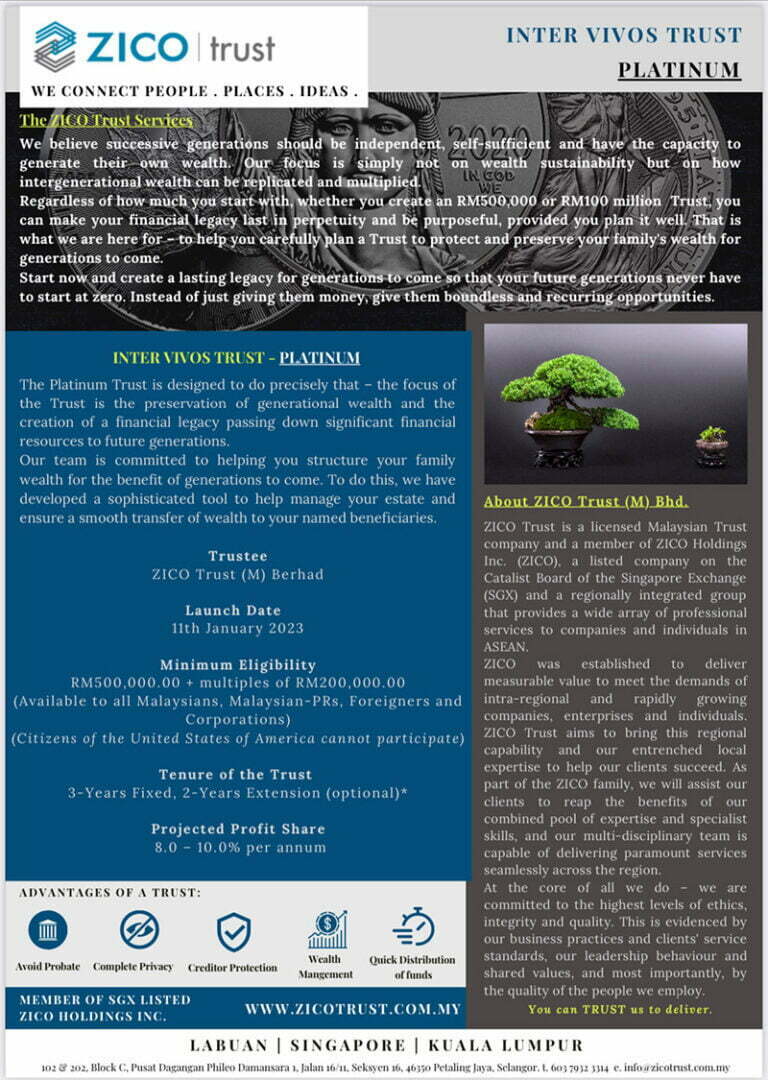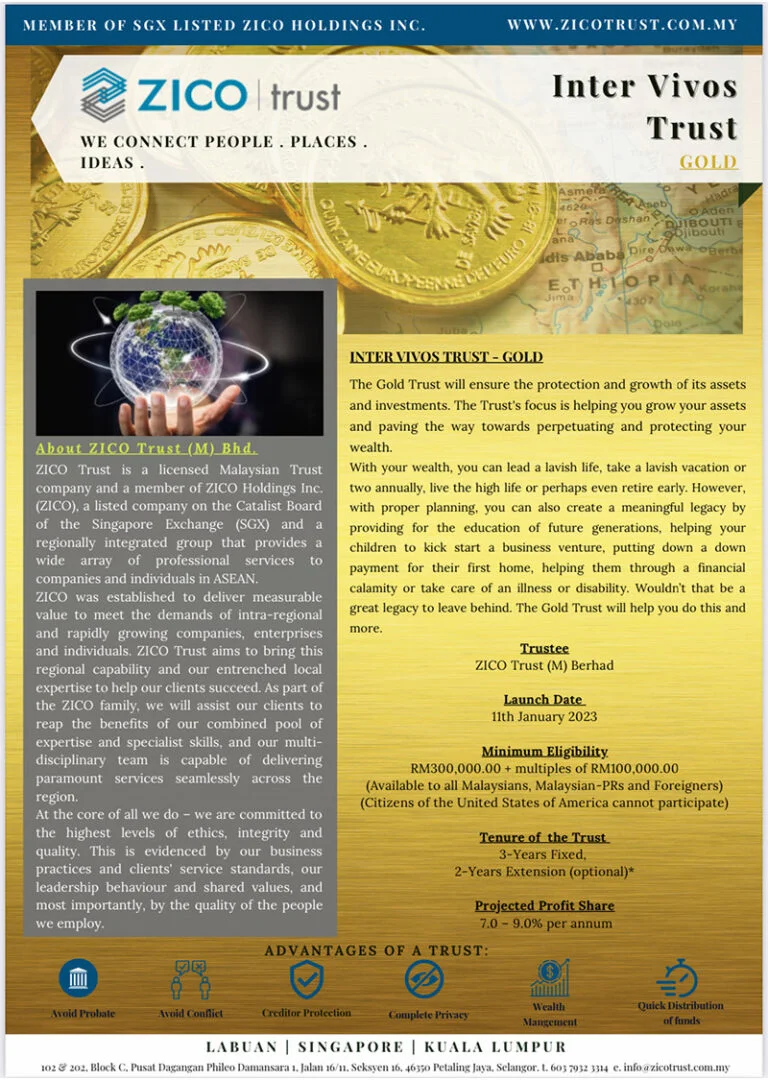A testamentary trust is a trust set up within a will document.
For instance, in his will, Mr. A wishes to bequeath RM 1 million to Ben, his 5-year old son, when he hits 25 years old. He entrusts a Trust Company to withhold this sum of cash if his son is below 25 at the time of his passing in the future.
A living trust is a trust created and is effective during and beyond the lifetime of its settlor.
For instance, Mr. D sets up a living trust with a Trust Company, parks RM 1 million into it and nominates Lin, his 5-year old son as its beneficiary. Mr. D instructs a Trust Company to distribute this sum of cash to Lin upon him reaching 25 years old.
There are four key differences between the two trust structures. They are as follows:
1. Legal Ownership
The setting up of a living trust involves a transfer of legal ownership of assets to the trustee. From above, Mr. D would transfer RM 1 million to a trust company in order for the trust company to administer and safeguard it for the benefit of Lin, his son. But in the case for a testamentary trust, there is no transfer of asset ownership during the settlor/testator’s lifetime. Hence, Mr. A shall continue to hold onto his cash, after he had set up his testamentary trust. This leads us to:
2. Protection from Creditors
Supposedly, both Mr. A (testamentary) and Mr. D (living) pass away:
Testamentary Trust:
In Mr. A’s case, his RM 1 million shall be frozen and will form a part of his estate. To unlock it, the executor shall first apply for the Grant of Probate (GP) from the High Court. Then, the executor could retrieve all his estate, settle all of his taxes and debts owed and transfer the remainder of his estates to his beneficiaries as stipulated in his will document. This includes the RM 1 million to the trust company if Ben is below 25 years old.
There is no protection against creditors for the money is only transferable to his trustee after a full settlement of taxes and debts owed to both his creditors and the government.
Living Trust:
In Mr. D’s case, the RM 1 million placed in his living trust shall not be frozen. This is because the trustee has legal ownership of this sum of cash and hence, is able to continue its administration with accordance to its trust deed.
Therefore, a living trust could offer asset protection against creditors.
3. Effective Date
A testamentary trust is effective upon the settlor/testator’s death.
Whereas, a living trust is effective upon its creation by the settlor. This is vital as the trustee could distribute cash in the trust to offer financial relief to its settlor if he loses his ability to self-manage his finances due to major life circumstances such as dementia, major disease, or permanent disability.
For instance, if both Mr. A and Mr. D has dementia in the future:
Testamentary Trust:
Mr. A’s testamentary trust remains ineffective as Mr. A is still alive. Hence, Mr. A would need to depend on his family members to care for him financially.
Living Trust:
The trustee could distribute cash to Mr. D’s family members (wife or children) on a regular basis. This enables Mr. D’s family members to use the cash proceeds in fulfilling Mr. D’s financial obligations such as living and medical costs, debts and other commercial obligations.
Conclusion:
Overall, it is key to know the differences between testamentary and living trust. Each type of trust has its unique attributes and plays a different role in ensuring financial security. A professional trust consultant could explain their differences and offer customised solutions to cater to the financial protection needs arising from our esteemed clients.





